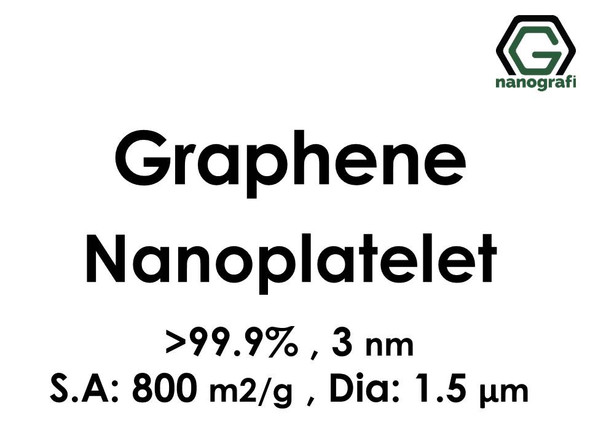Carbon Nanotubes Doped with 32 wt% Graphene Nanopowder/Nanoparticles
- SKU:
- NG01SC0606
- Shipping:
- Calculated at Checkout
Description
1 gram: 41 €
5 grams: 76 €
25 grams: 195 €
100 grams: 410 €
500 grams: 1634 €
1000 grams: 2633 €
Contact us for tailored quotes on larger quantities & experience exceptional solutions from our experts.
Carbon Nanotubes Doped with 32 wt% Graphene Nanopowder/Nanoparticles
Graphene Purity: 99%, Thickness: 5 nm, CNT Purity: >97 wt%
Carbon Nano Tubes doped with graphene, one of the promising graphene derivatives, is a hybrid structure composes of a covalently bonded graphene and carbon nano tubes. The hybrid material, CNT doped with graphene, extends the excellent properties of low-dimensional carbon materials (e.g., graphene, carbon nanotube - CNT) such as electrical condctivity and large specific surface area. CNT doped with graphene can be used in many various applications in areas such as energy storage, supercapacitor and building blocks composite. Nanografi supplies Carbon Nanotubes Doped wtih 32 wt% Graphene products with high quantity and low price and many types for different applications.
Technical Properties of Carbon Nanotubes Doped with 32 wt% Graphene
| 32 wt% Graphene Nanopowder | ||
| Purity | 99% | |
| Thickness (nm) | 5 | |
| Diameter (μm) | 1.0-12.0 | |
| Specific Surface Area (m2/g) | 500-1200 | |
| Conductivity (s/m) | 1000-1500 | |
| Shape | two-dimensional | |
| Elemental Analysis | C | O |
| Carbon Nanotubes (Multi Walled Carbon Nanotubes) | 99.6 | 0.4 |
| Purity | > 97 wt% | |
| Color | black | |
| Average Outside Diameter (nm) | > 50 | |
| Average Inside Diameter (nm) | 5 | |
| Length (µm) | 15-25 | |
| Tap Density (g/cm3) | 0.15 | |
| True Density (g/cm3) | ~2.4 | |
| Specific Surface Area (m2/g) | > 65 | |
| Ash | < 1.5 wt% | |
| Electrical Conductivity (S/cm) | > 98 |
Applications of Carbon Nanotubes Doped with 32 wt% Graphene
Carbon NanoTubes doped with Graphene nanoplatelets show effective improvements in electrical and mechanical properties. Such improvements include; hardness, tensile strength, specific strenght, and elastic modulus. These improvements result in wide usage of these materials for different applications. Some of these applications include; drug delivery, biosensors, CNT composites, catalysis, nanoprobes, hydrogen storage, lithium batteries, gas-discharge tubes, flat panel displays, supercapacitors, transistors, solar cells, photoluminescence, templates.























